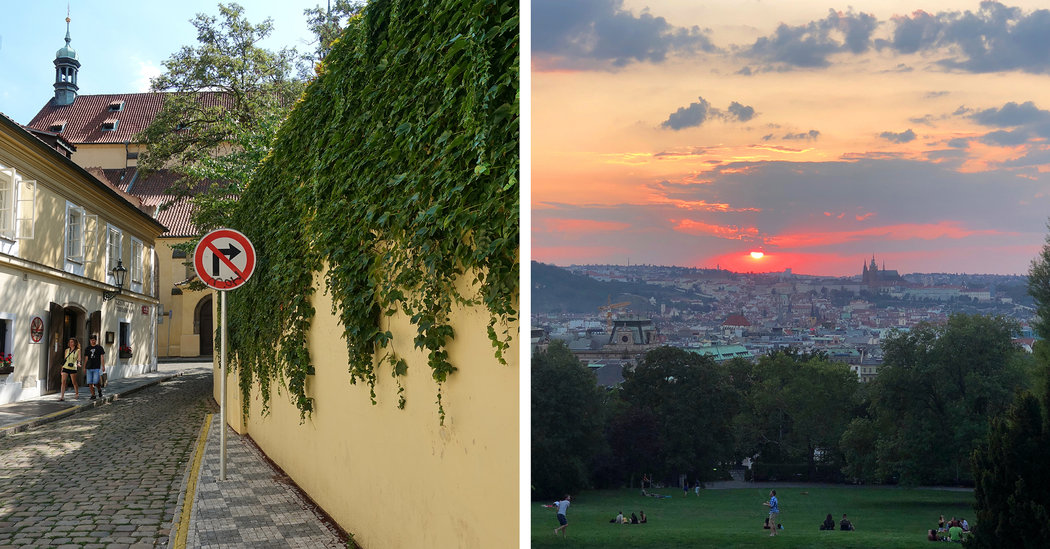
Under Austrian rule, Mr. Trejtnar explained, all official theater in big cities was performed in German. The only outlet for Czech people to see culture in their native language came from families who traveled in caravans from town to town performing puppet shows. “The message of these puppeteers was kept by writers and poets, and when there was a national uprising, they had the aura of national heroes because they had carried the language around,” he said. “For puppetry, 1918 was very important.”
Joining the circus
Across the Vltava River, at the two-week Letni Letna “new circus” festival in the hip Prague 7 district, the link between puppetry and the city’s booming avant-garde performance scene was undeniable. The Puppets in Prague students would be debuting their production of “The Magnificent Seven” here as one of the two to three puppet shows scheduled every day. Nighttime shows featured acrobatics in tents.
There’s a certain symbolism to Czech puppeteers and circus performers having such freedom of expression on this particular hill: It was once home to the world’s largest monument to Stalin (the area is still sometimes called Stalin), now replaced with a 75-foot-tall red metronome. Come dark, it turns into an outdoor party with a fantastic view of the skyline, where the youth of the city bring their beers, set off fireworks, dance to dubstep and make out.
Letni Letna started 14 years ago and has since grown to be one of the highlights of a Prague summer. Julia and I got tickets to the headline show, “Baro d’Evel (Bestia),” which promised a harmony of two-legged, four-legged and winged performers. That meant humans balancing on top of galloping horses, sometimes chasing birds. Another night, I saw “Cirque Inextremiste (Extension),” an impressive balancing act involving two men, some sturdy wooden planks and metal gas canisters — before a third performer in a wheelchair came in with a forklift.
What I most noticed, though, was how rapt the Czech audience was, including children. Cellphone usage was forbidden but the warning seemed unnecessary. Ms. Gaffen told me this is largely because Czech children start watching puppetry in kindergarten. They become used to live performance at such a young age, and grow up with such respect for it, that the idea of supplementing that entertainment with a glowing screen doesn’t even cross their minds.
Palace of glass
One of the reasons I was determined to dig into Prague’s contemporary art scene is because it plays a huge role in my family. My mother, Lucy Lyon, is an artist working in the specialized field of cast glass sculpture (similar to bronze statues made in molds). The Czechs are to cast glass what the Venetians are to blown glass: the pre-eminent practitioners in the world. I saw their huge kilns in action on my previous visit. When my mother wants to make a big piece, she sometimes sends it to the Czechs.
On my mom’s recommendation, Julia and I made our way to the quiet residential neighborhood of Smichov, where one of my favorite artists, Karen LaMonte — known for her realistic, life-size dresses in glass, marble and metals — had an exhibition at the newly opened Museum Portheimka. Ms. LaMonte grew up in Manhattan and has been living in Prague, working with Czech glassmakers, for 20 years.






